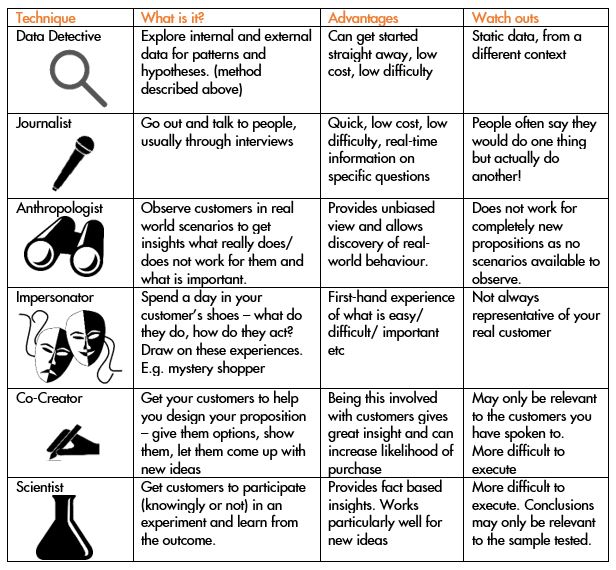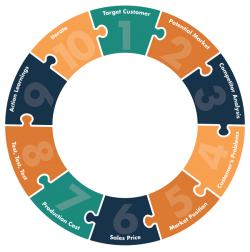How to really understand your customer – get out of the office

There are no facts in the building… so get the hell out and talk to customers
Steve Blank, Entrepreneur & Educator
It’s difficult to learn what customers really want and really value in order to gain competitive advantage or even simply to create products and services that customers will actually use and buy. Never before have we had more access to readily available information both inside and outside our companies. In fact, it would appear that we can do almost any amount of customer research from our desks. Any and all of the following can give us a wealth of data to identify patterns, needs and opportunities:
- Google trends
- Google keyword planner
- Government census data
- World Bank reports
- Third party research reports
- Social media analytics
- Customer Relationship System (CRM)
- Tracking customers on websites
- Internal data mining
So why would we need anything else?
Using available data sources should simply be a launch pad to getting started with customer insights. It is one piece in the puzzle of finding out real world patterns backed up by research that will help your proposition exceed above others. Whilst the information above is instantly available, it is static and may well be out of date or created for a different context or viewpoint from the one you need.
Therefore, existing data is only the starting point. To really understand the customer and how we can best meet their need, we actually need to go and talk to them!
The solution is to get out of the office
Jon Walbancke, Unilever Marketing Transformation Director UK, tells us that “99.9% of our insights and answers come from outside of the office. We really encourage people to be out, being curious, investigating the world.”
What are the other key methods to understand our customer and create a compelling competitive advantage?
The team at Strategyzer give us 6 techniques that can help explore your customers and gain better insights1:

Each technique is valid and useful to some extent on its own but if you really want to understand customers you have to have a mix of these techniques. Which techniques you use will depend on your business, your particular proposition and also your resources.
With the number one reason2 that innovations fail being no market need, it really is vital that you get out and talk to your customers. Find out what is really important to them and what is not! It may or may not be what you expected. It does not matter if you were right or wrong, what matters is that you start to understand more so that you can tailor your proposition better.
The trick is to learn faster and reduce risk by embracing failure. Testing ideas comes with failure. Yet failing cheaply and quickly leads to more learning which reduces risk. You will need to test, adapt, test, adapt until you have refined your idea sufficiently to create that competitive advantage.
This then needs to be repeated regularly. Keep talking, keep exploring, keep being curious about your customers, your market and how you can compete on what really matters to the people who hold the key to your success; your customers.
References
1 Value Proposition Design by Alex Osterwalder, Yves Pigneur, Greg Bernarda and Alan Smith published 2014
2 CB Insights 2014





